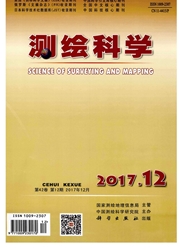

 中文摘要:
中文摘要:
人口统计数据空间化是解决统计数据与自然要素数据融合分析的有效途径。本文以张家界市永定区为研究单元,对小尺度区域的人口密度空间分布模拟进行了初步研究。文章根据2005年《永定区统计年鉴》所统计的人口数据,分析了永定区各乡镇平均人口密度与土地利用类型指数及地形指数(平均高程和平均坡度)之间的相关性。基于相关性分析,以GIS软件与SPSS统计软件为工具,运用多元回归的思想建立了人口数据空间化模型,同时生成了永定区250m×250m空间分辨率的栅格人口密度图。结果表明,模型模拟的精度较高,模拟过程具有较强的可操作性,可为县域尺度人口空间分布的应用研究提供借鉴。同时,研究结果为永定区推进城市化进程,提高人口、资源和环境的科学管理提供了理论基础。
 英文摘要:
英文摘要:
Spatial distributing of statistical population data is an effective way to integrate statistical data and natural factors. With Yongding district in Zhangjiajie as research unit, this paper makes an elementary study for simulating spatial distribution of population density in small scale. Based on the statistical population data by the Statistical Yearbooks of Yongding in 2005, this research analyses the relationship between population density and the influencing factors in Yongding district, including various land use indexes and topographical index (mean elevation and mean slope). Then, taking GIS software and SPSS statistical software as tools, this paper established the model of population distribution by means of multiple variables regression analysis. At last, a rasterized population density map for Yongding district with a resolution of 250m × 250m was calculated. It is found that the method can produce better simulation results and the operation is of great significance in the practice application. The method used in this paper can be referenced by the applied researches for county-scale population distribution. At the same time, the results can provide a theoretical basis for promoting urbanization process and improving the management of population, resources and environment in Yongding district.
 同期刊论文项目
同期刊论文项目
 同项目期刊论文
同项目期刊论文
 Study on the urban heat island effects and its relationship with surface biophysical characteristics
Study on the urban heat island effects and its relationship with surface biophysical characteristics 期刊信息
期刊信息
